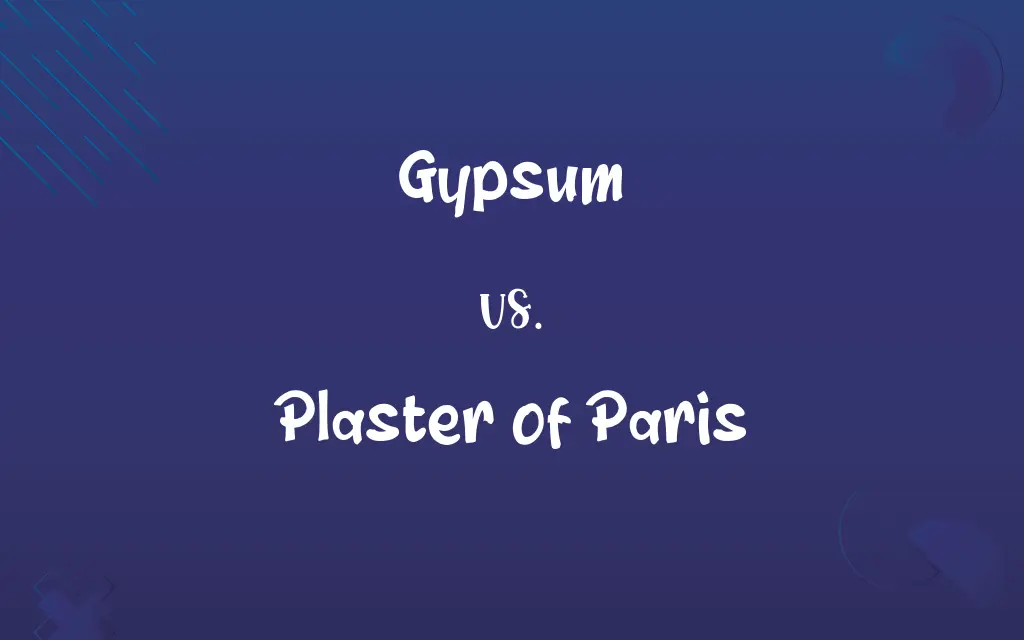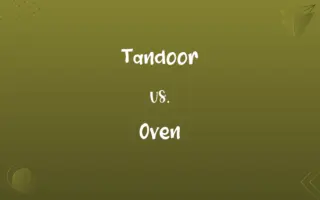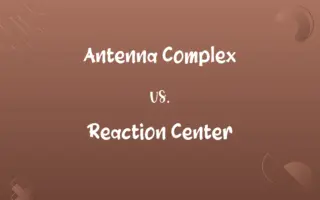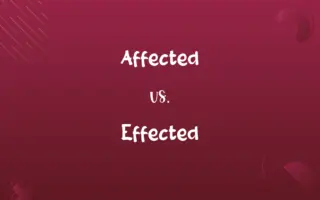Gypsum vs. Plaster of Paris: Know the Difference

By Shumaila Saeed || Updated on December 25, 2023
Gypsum is a natural mineral used in construction and agriculture, while Plaster of Paris is a processed form of gypsum used for casts, molds, and artistic applications.

Key Differences
Gypsum is a soft sulfate mineral composed of calcium sulfate dihydrate. It's found in sedimentary rock formations and is mined. Plaster of Paris, however, is a fine white powder produced by heating gypsum to remove water molecules.
Shumaila Saeed
Dec 19, 2023
In its raw state, gypsum is primarily used in the production of wallboard and plaster for buildings. Plaster of Paris, due to its fine, powdered form and quick-setting properties, is used for making molds, casts, and intricate decorative work.
Shumaila Saeed
Dec 19, 2023
Gypsum has the chemical formula CaSO4·2H2O, indicating it contains water in its crystal structure. When heated to about 150°C, gypsum loses water and becomes the hemihydrate Plaster of Paris (CaSO4·½H2O).
Shumaila Saeed
Dec 19, 2023
Gypsum is valued in agriculture as a soil conditioner and fertilizer. Plaster of Paris, on the other hand, is not used in agriculture but is widely used in art, medicine for making orthopedic casts, and in construction for decorative elements.
Shumaila Saeed
Dec 19, 2023
Gypsum can be recycled and used in various industries, reducing environmental impact. Plaster of Paris, once set, is less recyclable and is often discarded after its intended single use.
Shumaila Saeed
Dec 19, 2023
ADVERTISEMENT
Comparison Chart
Use in Construction
Used for wallboard, plaster
Used for decorative elements, molds
Shumaila Saeed
Dec 19, 2023
ADVERTISEMENT
Gypsum and Plaster of Paris Definitions
Gypsum
A soft mineral used in construction.
They mined gypsum to manufacture drywall.
Shumaila Saeed
Dec 11, 2023
Plaster of Paris
A material for making casts and molds.
The artist shaped the mask using Plaster of Paris.
Shumaila Saeed
Dec 11, 2023
Gypsum
A natural resource used in agriculture.
Farmers added gypsum to improve soil quality.
Shumaila Saeed
Dec 11, 2023
Plaster of Paris
A hemihydrate gypsum product.
Plaster of Paris sets rapidly due to its hemihydrate form.
Shumaila Saeed
Dec 11, 2023
Gypsum
A mineral with hydrate properties.
Gypsum's hydrate nature makes it useful in cement.
Shumaila Saeed
Dec 11, 2023
ADVERTISEMENT
Plaster of Paris
Used in orthopedics for casts.
The doctor applied Plaster of Paris for the broken arm cast.
Shumaila Saeed
Dec 11, 2023
Gypsum
A raw material in wallboard production.
The construction company sourced gypsum for wallboard.
Shumaila Saeed
Dec 11, 2023
Plaster of Paris
A fine powder used in art and decor.
He used Plaster of Paris for the ornate ceiling design.
Shumaila Saeed
Dec 11, 2023
Gypsum
A sulfate mineral used in making plaster.
The gypsum was ground into a fine powder for plaster.
Shumaila Saeed
Dec 11, 2023
Plaster of Paris
A quick-setting building material.
They used Plaster of Paris for the sculpture mold.
Shumaila Saeed
Dec 11, 2023
Gypsum
A widespread colorless, white, or yellowish mineral, CaSO4·2H2O, used in the manufacture of plaster of Paris, various plaster products, and fertilizers.
Shumaila Saeed
Dec 10, 2023
Gypsum
A mineral consisting of hydrated calcium sulphate. When calcinated, it forms plaster of Paris.
Shumaila Saeed
Dec 10, 2023
Gypsum
A mineral consisting of the hydrous sulphate of lime (calcium). When calcined, it forms plaster of Paris. Selenite is a transparent, crystalline variety; alabaster, a fine, white, massive variety.
Shumaila Saeed
Dec 10, 2023
Gypsum
A common white or colorless mineral (hydrated calcium sulphate) used to make cements and plasters (especially plaster of Paris)
Shumaila Saeed
Dec 10, 2023
Repeatedly Asked Queries
What is gypsum primarily used for?
Gypsum is primarily used in construction for making wallboard and plaster.
Shumaila Saeed
Dec 19, 2023
How is Plaster of Paris made from gypsum?
Plaster of Paris is made by heating gypsum to about 150°C to remove water.
Shumaila Saeed
Dec 19, 2023
Can gypsum improve soil quality?
Yes, gypsum is used in agriculture to improve soil structure and fertility.
Shumaila Saeed
Dec 19, 2023
Is gypsum a renewable resource?
Gypsum is considered a sustainable material as it can be recycled.
Shumaila Saeed
Dec 19, 2023
Can Plaster of Paris be reused?
Once set, Plaster of Paris is typically not reusable.
Shumaila Saeed
Dec 19, 2023
Is gypsum environmentally friendly?
Gypsum is environmentally friendly due to its natural occurrence and recyclability.
Shumaila Saeed
Dec 19, 2023
Is Plaster of Paris safe for making children's crafts?
Yes, when used correctly, Plaster of Paris is safe for crafts.
Shumaila Saeed
Dec 19, 2023
Does gypsum have water in its chemical structure?
Yes, gypsum contains water molecules in its crystal structure.
Shumaila Saeed
Dec 19, 2023
What are the safety precautions for using Plaster of Paris?
Avoid inhalation and prolonged skin contact; use protective gear when handling.
Shumaila Saeed
Dec 19, 2023
Can Plaster of Paris be used outdoors?
Plaster of Paris is not ideal for outdoor use as it's not weather-resistant.
Shumaila Saeed
Dec 19, 2023
Does Plaster of Paris expand or contract as it sets?
Plaster of Paris expands slightly as it sets, ensuring a tight fit in molds.
Shumaila Saeed
Dec 19, 2023
How long does Plaster of Paris take to set?
Plaster of Paris typically sets in about 30 to 45 minutes.
Shumaila Saeed
Dec 19, 2023
Can gypsum be used in cement production?
Yes, gypsum is an important ingredient in cement production.
Shumaila Saeed
Dec 19, 2023
Can Plaster of Paris be used for permanent structures?
It's typically used for temporary molds or casts, not for load-bearing structures.
Shumaila Saeed
Dec 19, 2023
Is gypsum fire-resistant?
Yes, gypsum is naturally fire-resistant, making it ideal for building materials.
Shumaila Saeed
Dec 19, 2023
Is Plaster of Paris environmentally friendly?
Its environmental impact is higher due to lower recyclability compared to gypsum.
Shumaila Saeed
Dec 19, 2023
Can gypsum be used in its natural form?
Yes, gypsum can be used in both its natural rock and powdered forms.
Shumaila Saeed
Dec 19, 2023
Are there different types of gypsum?
Yes, there are several types of gypsum, including alabaster and satin spar.
Shumaila Saeed
Dec 19, 2023
Can gypsum be colored or painted?
Yes, gypsum products can be painted or colored.
Shumaila Saeed
Dec 19, 2023
Can Plaster of Paris be sanded or carved?
Yes, after setting, it can be sanded or carved for artistic purposes.
Shumaila Saeed
Dec 19, 2023
Share this page
Link for your blog / website
HTML
Link to share via messenger
About Author
Written by
Shumaila SaeedShumaila Saeed, an expert content creator with 6 years of experience, specializes in distilling complex topics into easily digestible comparisons, shining a light on the nuances that both inform and educate readers with clarity and accuracy.









































































